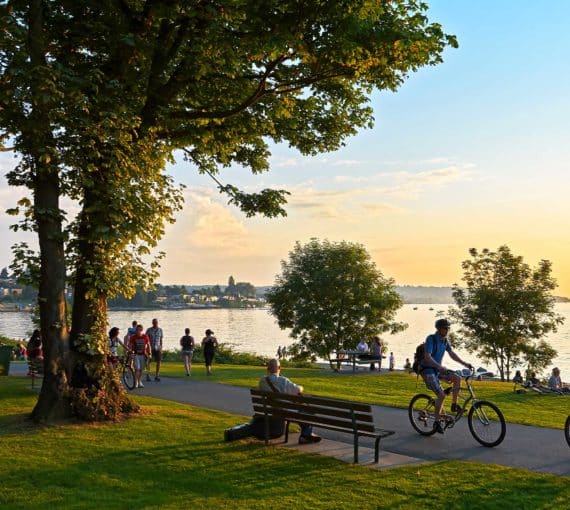
Learn why transit funding from both provincial and federal levels is crucial for a sustainable and healthier future. (Photo: Samson Katt via pexels)
In recent weeks air quality in many parts of Ontario has been atrocious. Much of this has been caused by wildfire smoke, fuelled by a changing climate and record temperatures. At one point Toronto reportedly had the worst air on Earth.
The Ontario government’s immediate response — if response it can be called — was to urge residents to eschew campfires. But there’s something else the province, and Ottawa, could do to help us breathe better: put more money into public transit.
Fast, convenient buses and rail provide a crucial alternative to the private, gas-burning automobiles that are major sources of urban air pollution.
How much of a difference can transit make? A significant one. The Canadian Public Health Association says, “People who live in communities with high-quality public transit drive half as many kilometres as residents who live in car-oriented communities.” The association adds that health benefits are even more substantial if transit services are electrified.
But transit does far more than tackle smog. It also helps to make life affordable, boosts the economy and creates jobs.
The CPHA says, “Households can save, on average, $10,000 per year by using public transit.” For a low-income family that’s huge. The Canadian Urban Transit Association released a paper in 2019 that aggregated these savings across the country and found transit “reduces vehicle operating costs for Canadian households by about $12.6 billion annually.”
The CPHA says, “Households can save, on average, $10,000 per year by using public transit.” For a low-income family that’s huge. The Canadian Urban Transit Association released a paper in 2019 that aggregated these savings across the country and found transit “reduces vehicle operating costs for Canadian households by about $12.6 billion annually.”
Transit also cuts costs — and prevents human suffering — by reducing traffic collisions. (Given that buses are operated by professional drivers, this is not surprising.) We often overlook the financial impact of car crashes, but the dollars are enormous. CUTA says, “Transit reduces the economic costs of traffic collisions by almost $3.2 billion annually.”
Manufacturing, building and operating buses, light rail and subway systems generate a great deal of employment. Earlier this year Statistics Canada released data showing over 130,000 full-time employees — including some 80,000 drivers — work in the bus sector alone. When we put money into transit, we hire our neighbours.
It’s also worth noting that support for transit comes not just from environmentalists and the labour movement but from mainstream commentators as well. In a 2020 editorial, “Green, equitable and job-creating: Why Ottawa should make a big investment in public transit,” the Globe and Mail suggested that for millions of workers — including those we all depend on such as health-care and food workers — transit is a necessity.
So, the case for transit funding from upper levels of government couldn’t be stronger.
But here’s the problem: In general, Ottawa and the province want to support big-ticket capital projects like light rail and subway construction. This is valuable, but what transit agencies need most right now is money for daily operations.
But here’s the problem: In general, Ottawa and the province want to support big-ticket capital projects like light rail and subway construction. This is valuable, but what transit agencies need most right now is money for daily operations.
Operations funding pays for crucial but un-glamorous things such as drivers’ salaries, station sanitation and vehicle maintenance. If transit systems can’t cover these costs, they can’t even think about ridership expansion.
The Ontario Public Transit Association estimates that the province’s transit providers face an operations shortfall this year of about $500 million. It’s vital that Queen’s Park intervene and provide this funding as soon as possible.
It’s also critical that we see action from Ottawa.
To its credit, the federal government is committed to a permanent transit fund that will provide $3 billion annually. But the money doesn’t start flowing until 2026 and will likely cover only capital costs.
Last year, the feds supported municipal transit operations across the country with a one-time payment of $750 million. As cities continue to deal with pandemic-related ridership loss, Ottawa should provide this money again so transit systems can cover crucial day-to-day expenses.
Cleaner air, greater affordability and more good jobs would be the result.
This op-ed was originally published in The Hamilton Spectator.
Always grounded in sound evidence, the David Suzuki Foundation empowers people to take action in their communities on the environmental challenges we collectively face.




